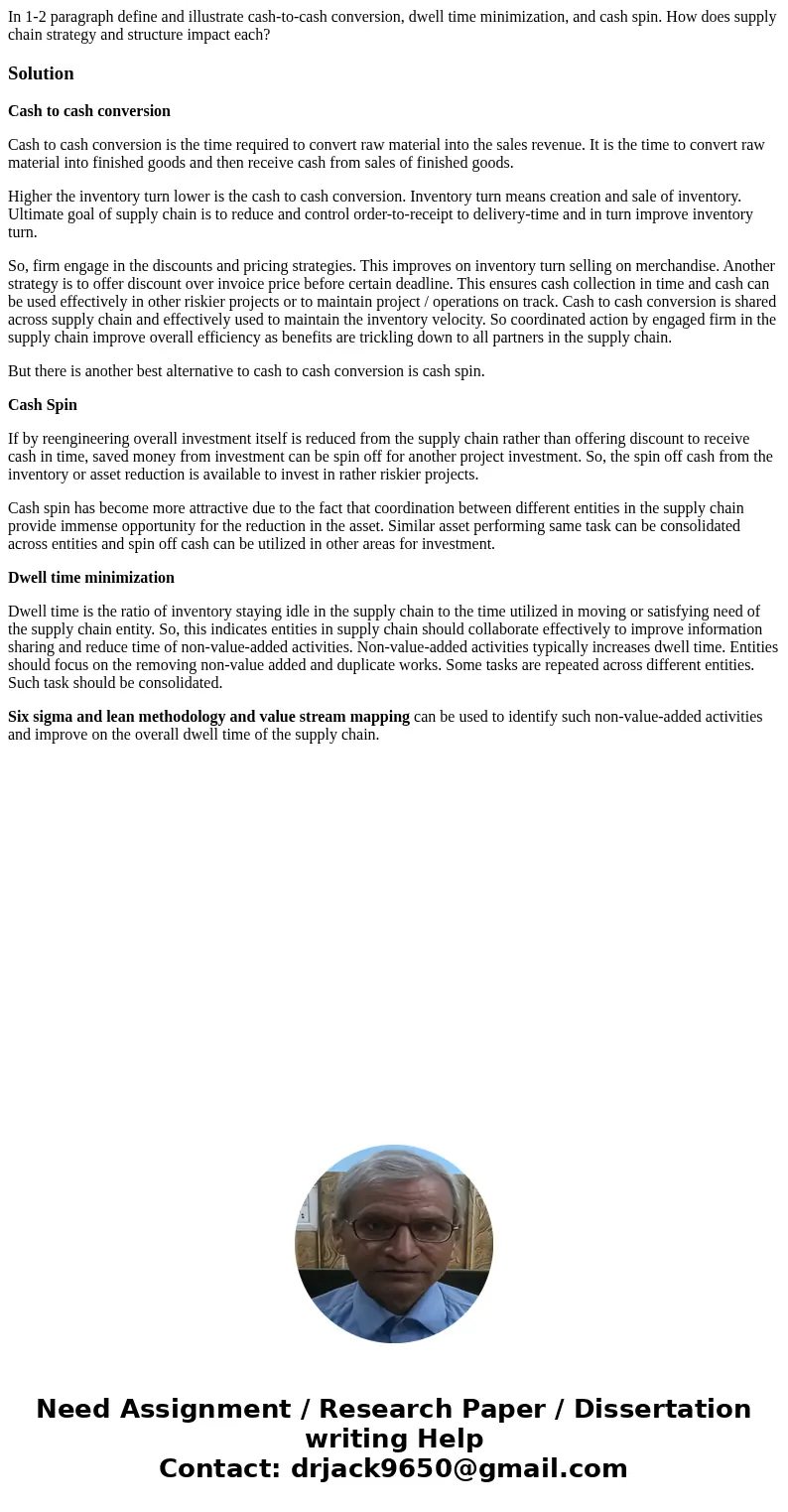In 12 paragraph define and illustrate cashtocash conversion
In 1-2 paragraph define and illustrate cash-to-cash conversion, dwell time minimization, and cash spin. How does supply chain strategy and structure impact each?
Solution
Cash to cash conversion
Cash to cash conversion is the time required to convert raw material into the sales revenue. It is the time to convert raw material into finished goods and then receive cash from sales of finished goods.
Higher the inventory turn lower is the cash to cash conversion. Inventory turn means creation and sale of inventory. Ultimate goal of supply chain is to reduce and control order-to-receipt to delivery-time and in turn improve inventory turn.
So, firm engage in the discounts and pricing strategies. This improves on inventory turn selling on merchandise. Another strategy is to offer discount over invoice price before certain deadline. This ensures cash collection in time and cash can be used effectively in other riskier projects or to maintain project / operations on track. Cash to cash conversion is shared across supply chain and effectively used to maintain the inventory velocity. So coordinated action by engaged firm in the supply chain improve overall efficiency as benefits are trickling down to all partners in the supply chain.
But there is another best alternative to cash to cash conversion is cash spin.
Cash Spin
If by reengineering overall investment itself is reduced from the supply chain rather than offering discount to receive cash in time, saved money from investment can be spin off for another project investment. So, the spin off cash from the inventory or asset reduction is available to invest in rather riskier projects.
Cash spin has become more attractive due to the fact that coordination between different entities in the supply chain provide immense opportunity for the reduction in the asset. Similar asset performing same task can be consolidated across entities and spin off cash can be utilized in other areas for investment.
Dwell time minimization
Dwell time is the ratio of inventory staying idle in the supply chain to the time utilized in moving or satisfying need of the supply chain entity. So, this indicates entities in supply chain should collaborate effectively to improve information sharing and reduce time of non-value-added activities. Non-value-added activities typically increases dwell time. Entities should focus on the removing non-value added and duplicate works. Some tasks are repeated across different entities. Such task should be consolidated.
Six sigma and lean methodology and value stream mapping can be used to identify such non-value-added activities and improve on the overall dwell time of the supply chain.

 Homework Sourse
Homework Sourse